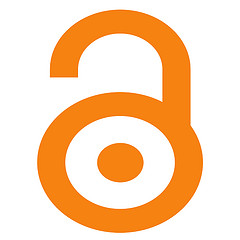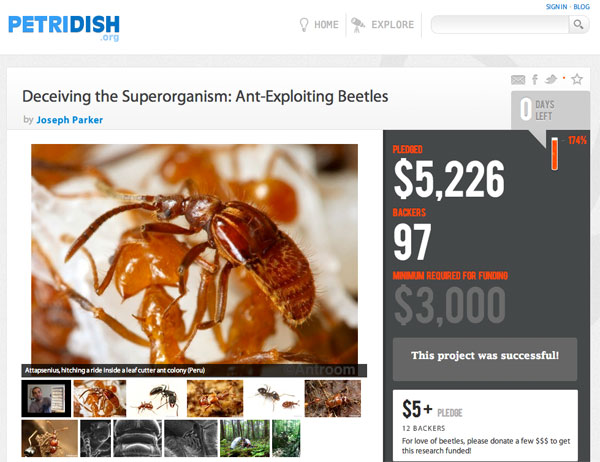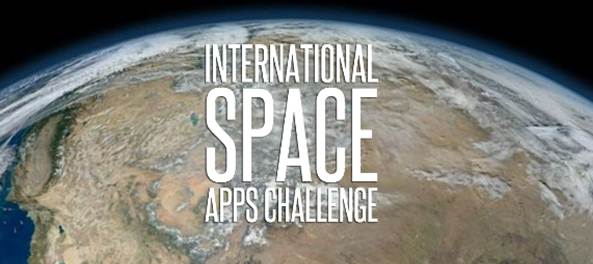- Case and Molly, a Game Inspired by Neuromancer (Greg Borenstein) — On reading Neuromancer today, this dynamic feels all too familiar. We constantly navigate the tension between the physical and the digital in a state of continuous partial attention. We try to walk down the street while sending text messages or looking up GPS directions. We mix focused work with a stream of instant message and social media conversations. We dive into the sudden and remote intimacy of seeing a family member’s face appear on FaceTime or Google Hangout. “Case and Molly” uses the mechanics and aesthetics of Neuromancer’s account of cyberspace/meatspace coordination to explore this dynamic.
- Rethinking Ray Ozzie — an inescapable conclusion: Ray Ozzie was right. And Microsoft’s senior leadership did not listen, certainly not at the time, and perhaps not until it was too late. Hear, hear!
-
Recursive Deep Models for Semantic Compositionality
Over a Sentiment Treebank (PDF) — apparently it nails sentiment analysis, and will be “open sourced”. At least, according to this GigaOm piece, which also explains how it works. - PLoS ASAP Award Finalists Announced — with pointers to interviews with the finalists, doing open access good work like disambiguating species names and doing open source drug discovery.
"open science" entries


Four short links: 4 October 2013
Neuromancer Game, Ray Ozzie, Sentiment Analysis, and Open Science Prizes


Four short links: 2 August 2013
Algorithmic Optimisation, 3D Scanners, Corporate Open Source, and Data Dives
- Unhappy Truckers and Other Algorithmic Problems — Even the insides of vans are subjected to a kind of routing algorithm; the next time you get a package, look for a three-letter letter code, like “RDL.” That means “rear door left,” and it is so the driver has to take as few steps as possible to locate the package. (via Sam Minnee)
- Fuel3D: A Sub-$1000 3D Scanner (Kickstarter) — a point-and-shoot 3D imaging system that captures extremely high resolution mesh and color information of objects. Fuel3D is the world’s first 3D scanner to combine pre-calibrated stereo cameras with photometric imaging to capture and process files in seconds.
- Corporate Open Source Anti-Patterns (YouTube) — Brian Cantrill’s talk, slides here. (via Daniel Bachhuber)
- Hacking for Humanity) (The Economist) — Getting PhDs and data specialists to donate their skills to charities is the idea behind the event’s organizer, DataKind UK, an offshoot of the American nonprofit group.


Four short links: 19 July 2013
Spatial Verbs, Open Source Malaria, Surviving Management, and Paper-like UAV
- Operative Design — A catalogue of spatial verbs. (via Adafruit)
- Open Source Malaria — open science drug discovery.
- Surviving Being (Senior) Tech Management (Kellan Elliott-McCrea) — Perspective is the thin line between a challenging but manageable problem, and chittering balled up in the corner.
- Disposable UAVs Inspired by Paper Planes (DIY Drones) — The first design, modeled after a paper plane, is created from a cellulose sheet that has electronic circuits ink-jet printed directly onto its body. Once the circuits have been laid on the plane’s frame, the craft is exposed to a UV curing process, turning the planes body into a flexible circuit board. These circuits are then connected to the planes “avionics system”, two elevons attached to the rear of the craft, which give the UAV the ability to steer itself to its destination.

White House moves to increase public access to scientific research online
More federally funded research and data will be made freely available to the public online.
Today, the White House responded to a We The People e-petition that asked for free online access to taxpayer-funded research.
 As part of the response, John Holdren, the director of the White House Office of Science and Technology Policy, released a memorandum today directing agencies with “more than $100 million in research and development expenditures to develop plans to make the results of federally-funded research publically available free of charge within 12 months after original publication.”
As part of the response, John Holdren, the director of the White House Office of Science and Technology Policy, released a memorandum today directing agencies with “more than $100 million in research and development expenditures to develop plans to make the results of federally-funded research publically available free of charge within 12 months after original publication.”
The Obama administration has been considering access to federally funded scientific research for years, including a report to Congress in March 2012. The relevant e-petition, which had gathered more than 65,000 signatures, had gone unanswered since May of last year.
As Hayley Tsukayama notes in the Washington Post, the White House acknowledged the open access policies of the National Institutes of Health as a successful model for sharing research. Read more…

Crowdfunding science
Micro-patronage could let researchers step around funding obstacles.
In our first science-as-a-service post, I highlighted some of the participants in the ecosystem. In this one, I want to share the changing face of funding.
Throughout the 20th century, most scientific research funding has come from one of two sources: government grants or private corporations. Government funding is often a function of the political and economic climate, so researchers who rely on it risk having to deal with funding cuts and delays. Those who are studying something truly innovative or risky often find it difficult to get funded at all. Corporate research is most often undertaken with an eye toward profit, so projects that are unlikely to produce a return on investment are often ignored or discarded.
If one looks to history, however, scientific research was originally funded by individual inventors and wealthy patrons. These patrons were frequently rewarded with effusive acknowledgements of their contributions; Galileo, for example, named the moons of Jupiter after the Medicis (though the names he chose ultimately did not stick).
There has been a resurgence of that model — though perhaps more democratic — in the modern concept of crowdfunding. Kickstarter, the most well-known of the crowdfunding startups, enables inventors, artists, and makers to source the funds they need for their projects by connecting to patrons on the platform. Contributors donate money to a project and are kept updated on its progress. Eventually, they may receive some sort of reward — a sticker acknowledging their participation or an example of the completed work. Scientists have begun to use the site, in many cases, to supplement their funding. Anyone can be a micro-patron!

“Deceiving the Superorganism: Ant-Exploiting Beetles” met its goal through Petridish, a funding site.


Four short links: 6 February 2013
Cite Spam, Astro Science Labs, Citizen Science, and Accelerating Research
- Manipulating Google Scholar Citations and Google Scholar Metrics: simple, easy and tempting (PDF) — scholarly paper on how to citespam your paper up Google Scholar’s results list. Fortunately calling your paper “AAAAAA In-vitro Qualia of …” isn’t one of the winning techniques.
- Seamless Astronomy — brings together astronomers, computer scientists, information scientists, librarians and visualization experts involved in the development of tools and systems to study and enable the next generation of online astronomical research.
- Eye Wire — a citizen science game where you map the 3D structure of neurons.
- Open Science is a Research Accelerator (Nature Chemistry) — challenge was: get rid of this bad-tasting compound from malaria medicine, without raising cost. Did it with open notebooks and collaboration, including LinkedIn groups. Lots of good reflection on advertising, engaging, and speed.

NASA launches second International Space Apps Challenge
In 2013, developers will once again boldly contribute code to projects where their code has never gone before.
From April 20 to April 21, on Earth Day, the second international Space Apps Challenge will invite developers on all seven continents to the bridge to contribute code to NASA projects.
Given longstanding concerns about the sustainability of apps contests, I was curious about NASA’s thinking behind launching this challenge. When I asked NASA’s open government team about the work, I immediately heard back from Nick Skytland (@Skytland), who heads up NASA’s open innovation team.
“The International Space Apps Challenge was a different approach from other federal government ‘app contests’ held before,” replied Skytland, via email.
“Instead of incentivizing technology development through open data and a prize purse, we sought to create a unique platform for international technological cooperation though a weekend-long event hosted in multiple locations across the world. We didn’t just focus on developing software apps, but actually included open hardware, citizen science, and data visualization as well.”
Aspects of that answer will please many open data advocates, like Clay Johnson or David Eaves. When Eaves recently looked at apps contests, in the context of his work on Open Data Day (coming up on February 23rd), he emphasized the importance of events that build community and applications that meet the needs of citizens or respond to business demand.
The rest of my email interview with Skytland follows. Read more…

Science as a service
What happens when you apply software-as-a-service principles to science?
Software as a service (SaaS) is one of the great innovations of Web 2.0. SaaS enables flexibility and customized solutions. It reduces costs — the cost of entry, the cost of overhead, and as a result, the cost of experimentation. In doing so, it’s been instrumental in spurring innovation.
So, what if you were to apply the principles of SaaS to science? Perhaps we can facilitate scientific progress by streamlining the process. Science as a service (SciAAS?) will enable researchers to save time and money without compromising quality. Making specialized resources and institutional expertise available for hire gives researchers more flexibility. Core facilities that own equipment can rent it out during down time, helping to reduce their own costs. The promise of science as a service is a future in which research is more efficient, creative, and collaborative. Read more…

Making the web work for science
Kaitlin Thaney on the value of open science and why broken methods are blocking big advances.
The field of science is firmly on our radar as a vertical with huge interest in and opportunities for the things that are foundational to O’Reilly’s world view: openness, platforms and APIs, creating more value than you capture, the web as foundational platform, the power of big data both as key to analytics and as business model chokepoint, sensors and the Internet of Things, open publishing … and it’s just beginning to be accelerated by startups.
It’s an exciting time in science, so for an update I spent some time with Kaitlin Thaney (@kaythaney), who helps organise Science Foo Camp, co-chairs Strata Conference in London, and who serves as the manager of external partnerships for Digital Science, a technology company serving scientific research, where she is responsible for the group’s public-facing activities. Read more…


Four short links: 24 September 2012
Open Publishing, Theatre Sensing, Reddit First, and Math Podcasts
- Open Monograph Press — an open source software platform for managing the editorial workflow required to see monographs, edited volumes and, scholarly editions through internal and external review, editing, cataloguing, production, and publication. OMP will operate, as well, as a press website with catalog, distribution, and sales capacities. (via OKFN)
- Sensing Activity in Royal Shakespeare Theatre (NLTK) — sensing activity in the theatre, for graphing. Raw data available. (via Infovore)
- Why Journalists Love Reddit (GigaOM) — “Stories appear on Reddit, then half a day later they’re on Buzzfeed and Gawker, then they’re on the Washington Post, The Guardian and the New York Times. It’s a pretty established pattern.”
- Relatively Prime: The Toolbox — Kickstarted podcasts on mathematics. (via BoingBoing)
